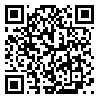2- tehran university
Objective: Exercise training appears to reduce both all-cause mortality and cardiovascular disease mortality by improving function capacity of heart . The purpose of this study was to assess the effects of selected continuous exercise training compared to an intense selected interval exercise training on functional capacity of POST CABG Patients.
Materials & Methods : Thirty three POST CABG patients (30 men, 3 women) 58.33± 9.50 and mean BMI: 27.05±3.55 kg/m2 participated in this study. Selected aerobic continues training (n=12) including: 30 – 60 min continues training with intensity of 70–85% of HR maximum and aerobic interval training (n=12) including three interval, 28-45 min and intensity of 70-90% of HR maximum three times a week for 8 weeks. Control group (n=9) only participate in pre and post tests. Functional capacity was measured with exercise testing (with Modified BRUCE protocol). Statistical methods that were used in this study include t student and ANOVA tests. SPSS Version of 16 used to analyze of all statistics test.
Results: There are not any significant differences between continuous and interval training groups (P=0.115). Also after program there is a significant difference between training and control groups (0.017). The precision comparison between groups indicates there is a significant difference between continuous and control (P=0.009) group but not any significant difference between interval and control (P=0.202).
Conclusion : The present data may be useful in effective designing intense aerobic continuous or interval training programs for patients with coronary artery disease (CAD) and specially coronary artery bypass surgery (CABG) and also improved health in the future.
Received: 22/04/2010 | Accepted: 6/11/2011 | Published: 18/12/2013
| Rights and permissions | |
 |
This work is licensed under a Creative Commons Attribution-NonCommercial 4.0 International License. |


